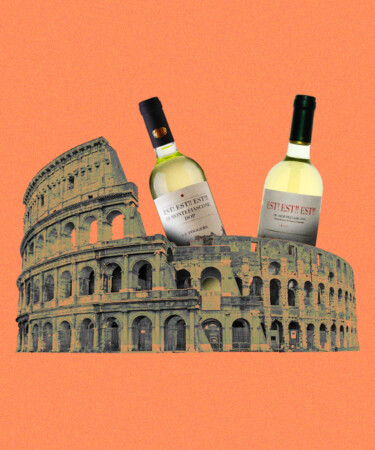While the Lazio region of central Italy might be home to one of the country’s most enticing culinary destinations — Rome, of course — the same can’t be said for the area’s wine. With renowned regions of Tuscany to the north and Campania to the south, Lazio’s bottles are often relegated to local restaurant tables and widely ignored on the international market. There are 26 distinct designations within Lazio, and one in particular has even been described as the planet’s “dullest white wine” by esteemed wine writers Hugh Johnson and Jancis Robinson in “The World Atlas of Wine.” Why would anyone pay extra attention to these seemingly lackluster wines? Well, it largely comes down to some goofy punctuation.
The region’s designation under the Italian denominazione di origine controllata (DOC) system is “Est! Est!! Est!!! di Montefiascone.” Slap that on a label and it tends to stand out on wine-shop shelves among Italian white wines like Fiano di Avellino and Roero Arneis, which tend to boast considerably fewer exclamation points. Legend has it that this unusual grammatical choice dates back to the 12th century, during which a German bishop was traveling to the Vatican for a meeting with the pope. According to the tale, the bishop sent someone from the church ahead of him to determine the best route, including which villages had the best wines. He was instructed to write “est” — Latin for “it is” — on the door or wall of any inns he visited that had stand-out wines so the bishop would know where to stop. At an inn in the town of Montefiascone, the wine was so impressive that the trail tester wrote “Est! Est!! Est!!!” on the door.
The details of this story are frequently and predictably disputed, and even though its origins are centuries old, it was only in 1966 that the white wines of this area were given official DOC status under the Est! Est!! Est!!! di Montefiascone geographical denomination. The appellation is situated to the north of Rome near Lake Bolsena and its volcanic soils. For a wine to qualify, the Trebbiano Toscano grape, which is known locally as Procanico, must make up between 50 and 65 percent of the blend. The rest of the blend can include Trebbiano Giallo (known locally as Rossetto) and Malvasia Bianca. The resulting wines are known for their delicate apple notes and crisp acidity, and while bottles from this appellation have been described as less than dynamic, many might appreciate their more subtle characteristics. So, if you see a bottle hailing from this area in Lazio, it might be worth checking out — maybe for its eccentric name or, at the very least, to put its alleged “dullness” to the test.
*Image retrieved from ink drop via stock.adobe.com
